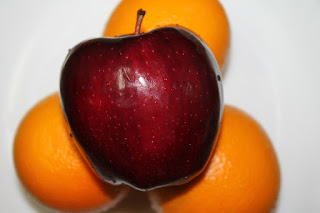These products were banned in Germany over 20 years ago and in Europe in 1997. Also at the beginning of 2015, Taiwan instituted a national ban of this ingredient in consumer products. While there are many coal tar shampoos on the market, Denorex’s website says that the percentage of coal tar has been decreasing due to the “FDA’s specified the optimal ratio of the 2 active ingredients – coal tar and menthol – for maximum effectiveness against dandruff and scalp itch.”
Since the concentration of PAHs in the coal tars used in shampoo and sealer are about the same, let’s examine the coal tar differences.
Half an ounce of dandruff shampoo (about 1.8% coal tar) has less than 1/100th of an ounce of coal tar in it.
An acre requires over 800 gallons of sealer to coat it twice (standard practice). And coal tar sealers are about 30% coal tar. Those gallons will weigh about 8,000 pounds and will yield about 2,500 pounds of coal tar.
Which weighs more 1/100th of an ounce or 2,500 pounds!! So industry was off in their math by a factor over a 4,000,000!
How Many Households Can Shampoo on a Acre of CT?
In the ’90’s the Nielsen Survey group looked at consumer purchasing over a two year period. They found out of 20,000 households about 3,000 purchased some coal tar shampoo with an average consumption of 7.6 ounces.
Using those same product assumptions, a one acre coal tar sealed parking lot has enough coal tar to meet the annual shampooing needs of nearly 300,000 households!
Comparing a Controlled Use with Common Use
Even if the use comparisons were close (which they’re not), there is a huge difference between a medicated product used in a controlled manner versus a pavement product that as it cures and wears indiscriminately exposes children, adults and the environment. In the same way, radiation therapy is a valid approach to treating cancer, but just because that is true, does not make putting radioactive iodine on parking lots necessarily safe.
A medicinal product is only used by those who need it and not by everyone in the general population. Even exposure to shampoo is an event that happens a few times a week, but exposure to house dust happens anytime you’re in your home, yard, crossing a parking lot or hanging out on your driveway.
Also the wash-off from a shampoo goes on to a treatment facility for further processing before entering the environment. Coal tar sealers expose all and go untreated into the environment.
The product warnings clearly state that coal tar shampoo must not come in contact with your eyes, mouth, nose, rectum or groin. This highlights the problem with coal tar sealers. As it is wears and departs from a sealer surface, children and adults don’t have that ability to heed that warning when coming in contact with the dust inside their homes, soil in their yards or on the driveways and playgrounds they spend time on.
| Director of the Pavement Coatings Technology Council attempting to distract with coal tar shampoos. |
We could get into more of the risk based analysis of shampooing with coal tar products, but I think you can see that comparing these two products is an irrelevant distraction from the facts that the use of coal tar sealers is a massive, indiscriminate use of a toxic product cast into the environment without any consideration of its effects.
So what does this tell you about an industry that must use these tactics to keep selling their products?

